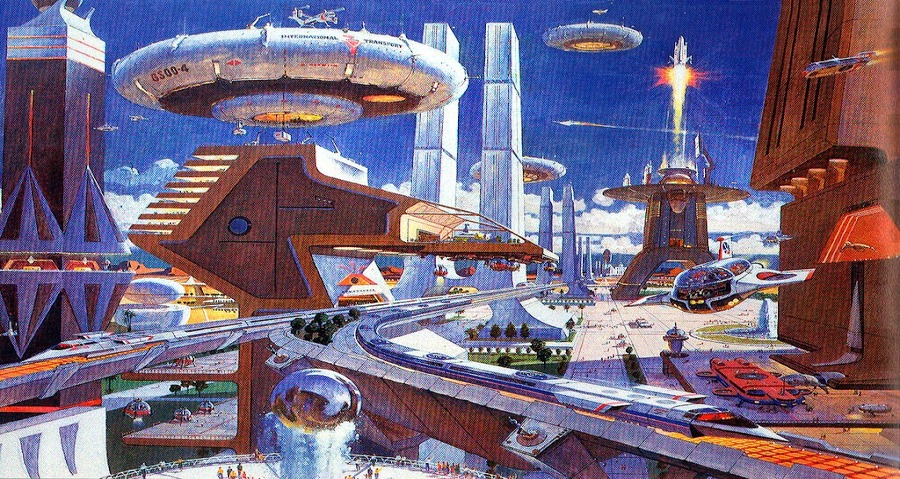Retro Futurism
Its cool

I AM A TIMETRAVLER
Exploring the Nostalgia of Retro Futurism
Retro futurism is a cultural movement that is characterized by a nostalgic fascination with the future. This movement is characterized by a fascination with the aesthetics of the past, and a longing for the futuristic technology of yesteryear. At its core, retro futurism is a celebration of the imagination and the potential of human innovation. It is a way of looking back at the past with a sense of wonder and excitement, while also looking forward to the possibilities of the future.

The origins of retro futurism can be traced back to the early 20th century, when people were filled with optimism about the future. During this time, people were excited about the potential of technology and science to improve their lives. This enthusiasm was reflected in the popular culture of the time, with books, movies, and art all depicting a future filled with advanced technology and exciting new developments.

As the years passed, this optimism gave way to a more cynical view of the future. The world was plagued by wars, economic downturns, and social upheaval, and people began to lose sight of the bright future that had once seemed so promising. In recent years, however, there has been a resurgence of interest in retro futurism. People are once again looking back at the past with a sense of wonder and excitement, and are rediscovering the futuristic technology and ideas of yesteryear.

One of the key features of retro futurism is a focus on the aesthetics of the past. This includes a fascination with the design and technology of the early 20th century, as well as a love for the bold colors and futuristic shapes of the era. Another important aspect of retro futurism is a longing for the futuristic technology of the past. This includes a fascination with things like flying cars, jetpacks, and other forms of transportation that were once thought to be the stuff of science fiction.
A Blast from the Past's Vision of the Future
Retro futurism is a unique aesthetic movement that combines elements of the past with futuristic visions of the future. It often incorporates vintage design styles and futuristic technology to create a unique, retro-futuristic look and feel. Retro futurism originated in the early 20th century, when artists and designers began to imagine what the future might look like. These futuristic visions were often influenced by the advancements of the time, such as the rise of the automobile and the development of new technologies.

One of the key elements of retro futurism is its focus on the past. Many retro-futuristic designs incorporate vintage design styles and technologies, such as the art deco movement of the 1920s and 30s. These styles are often used to create a sense of nostalgia, evoking memories of a past era while still incorporating futuristic elements.

Another important aspect of retro futurism is its focus on technology. Many retro-futuristic designs incorporate advanced technologies and futuristic design elements, such as sleek, futuristic vehicles and buildings. These designs often imagine a future where technology has advanced to the point where it is almost unrecognizable to us today.

Overall, retro futurism is a fascinating movement that blends the past and the future to create a unique and imaginative aesthetic. Whether it's in art, design, or even in popular culture, retro futurism is a reminder that the future is always changing and evolving, and that anything is possible.